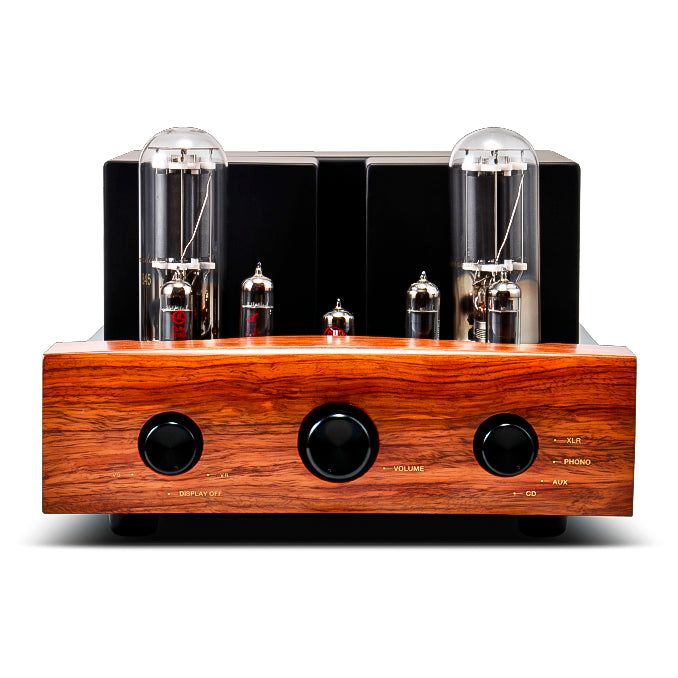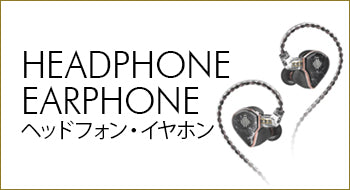■What is a "phono equalizer"?
To those who don't know the term "phonoequalizer," a phonoequalizer is one of the essential functions for recording playback.
Without this phono equalizer, you will not be able to play accurately when playing records.
The phono equalizer product page is here

Generally, when you want to play a CD on a player, you can simply connect the output terminal of the CD player to the input terminal of the amplifier using a cable, but in the case of records, it may not play properly.
A common occurrence is when you buy a record player and connect it to an amplifier in your home, but it doesn't make a sound, or you can only hear "sounds so small that it looks like a mosquito is flying around."
What exactly does this mean?
Unlike CDs, records are different from CDs, when you want to play records on a player, or when connecting the record player to an amplifier, if you do not connect it to the input terminal called "PHONO IN" on the amplifier side, as mentioned above, you will not hear a sound or you will only hear a small sound.
Normally, the amplifier for Hi-Fi audio is equipped with a phono equalizer, so you can just connect it to the PHONO IN terminal on the amplifier side.
On the other hand, small amplifiers and mini components that are currently available in the market today are hardly equipped with phono equalizers.
In the first place, small amplifiers that do not have a phono equalizer do not have a PHONO IN terminal. In that case,Phono Equalizer (Some people may need abbreviated as "phono Iko" or "phono amplifier" or "phono preamp").

Now, I realized that a phono equalizer is essential to play records up to this point.
But why do we need a phono equalizer?
■The two main functions of the phono equalizer
The phono equalizer has two functions.
The first is to increase the output level.
The output signal from audio equipment such as CD players is about 2V (volts), while the output signal from the record player is very small, at 0.1 to 5mV (mmV).
This is why listening to a small amplifier makes the sound so small.
Therefore, the signal must be amplified to a sufficient output level.
The second is to restore the sounds recorded on the record to their original sounds.
When recorded on a record, the bass is recorded small and the highs are recorded louder.
However, if it continues like this, it will not be the original sound, so we will have to restore it.
The keyword in this case is "RIAA curve."
Take advantage of the RIAA curve and do the opposite of the way recorded when playing records through the phono equalizer.
In other words, by increasing the bass and lowering the highs, you can restore the original sound.
To reorganize the role of the phono equalizer, it amplifies the very small output of the record and corrects the bass and high notes to restore it to its original sound.
■What is RIAA curve?
First, "RIAA" refers to the Recording Industry Association of America, which was founded in 1952 with the aim of standardizing analog records, and in 1954 it is a global standard that has become today's standard.
At that time, it was just before we finally moved from mono to stereo, and standards with slightly different curves were established depending on the record company, and the equalizer curves of records played and playback were different, so the playback did not play well.
This is why the RIAA curve has been integrated into one.
Here is a phono amplifier that can be used with various equalizer curves
★Bakoon Products EQA-5640mk4 Phono Equalizer Amplifier
★Bakoon Products CAP-1004 Multi-curve phono equalizer

■ Record needle
There are generally two types of record needles (record cartridges), and depending on the type, it is important to know how they are handled.
First, let me give you a brief explanation of the differences in cartridges.
・"MM (Moving Magnet) Cartridge"
Most cartridges are MM (moving magnet)-type.
You can easily enjoy watching records by connecting a record player to an amplifier with a high output power and a PHONO IN terminal.

・"MC (Moving Coil) Type Cartridge"
The MC (moving coil) type is said to have a good response in high-frequency reproduction, and although it is generally higher in price than the MM (moving magnet) type, it is considered to be high-performance.
On the other hand, the MC type cannot increase the number of turns (turns) of the built-in coil, so the output is about 1/10th lower than the MM type, and the volume is too low even if you put it in the PHONO IN terminal of the amplifier, so you will need to use a phono amplifier that supports MC type, or use an amplifying booster transformer that allows you to produce powerful sounds.
Record cartridge product page
"MC booster transformer"
MC cartridges have a lower voltage than MM cartridges, so the voltage needs to be increased.
This is an equipment that boosts electrical signals from an MC cartridge using a transformer.
The voltage is increased by using the coil turns ratio, resulting in powerful sound quality without a power source required.

To check, if an MM-type cartridge has no PHONO IN terminal, a phono equalizer will be required, and if an MC-type cartridge has no PHONO IN terminal, a boost transformer and a phono equalizer will be required.
The boost transformer product page is here

























